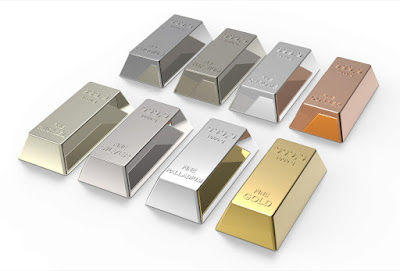The metal is a strong compound, and the word isn't just utilized as a substance compound? Minerals in synthesis shift from unadulterated components, straightforward salts, to very mind-boggling silicates in a large number of known developments. A science that reviews minerals
What Is Metal
What Is Matel
metals are inorganic, typically occurring, homogeneous solids, which have a specific crystalline structure and a specific compound creation.
In 1995, the World Metals Organization developed another definition saying, "A mineral is a valuable stone manufactured segment or increase that is basically surrounded because of geological techniques." Minerals have their specific physical properties, which are predictable for every mineral.
The natural properties of minerals
Optical properties
Shading: fixed shading - variable shading. Viability of the metal to reflect or assimilate white light. This trademark is perhaps the most vulnerable foundation used to decide the metal because of the impact of shading by toxins, aggravations in the brilliance of the precious stone or the thickness of the example where the slender example is lighter.
For instance, quartz and calcite can come in green, yellow, red, darker, blue, white and clear hues. Sulfur consistently comes in yellow and sulfur in metal.
Scratching: the shade of the metal powder
Straightforwardness: semi-straightforward, or hazy
Radiance: The capacity of a metal to ponder light beams falling it.
Metallic radiance: gold
Nonmetal radiance: jewel, glass (quartz), mucil (sulfur), magnificent (powder), satiny (asbestos, gypsum), natural (bauxite)
Reasonable properties
Valuable stone advancement:
The mineral comes to fruition as demonstrated by an extraordinary helper system. Right when the mineral can make bit by bit, its structure can be seen with the independent eye.
There are seven crystalline systems: three-tilt valuable stone structure, mono-tilt jewel structure, existing rhombic diamond structure, hexagonal pearl structure, triple pearl structure, quad diamond system and cubic pearl structure, numbered with extending balance.
Splittability:
It is the tendency of the metal to cut along a remarkable surface or edges as a result of the deficiency in the valuable stone structure. Study a couple of parts in some mineral models can be inconvenient, in spite of the way that the metal should show it.
As such, the model's vulnerability can be used to maintain a strategic distance from minerals that don't have the shortcoming to separating. The thoughts of splittability are definitely not hard to mix in with diamond improvement.
A couple of minerals have two properties, for instance, halite, calcite, and fluorite. There are minerals that simply have the property of splittability like mica, and various minerals simply have the property of crystalline improvement like quartz.
Metals are continually cut with the ability to part at comparable edges, while minerals with crystalline improvement are cut in unusual manners.
Hardness: The deterrent of metal to scratching, and it follows a Moho size of hardness: powder, mortar, calcite, fluorite, apatite, feldspar, quartz, topaz, corundum, valuable stone.
Division (breaking): the tendency of the metal to remove at standard levels (withdrawal levels) and parallel at its ways are light lanes, parceled into clear partition - in at any rate one course - and detached partition.
Separation: breakage or breakage of the metal in view of external parts
Split surface: The condition of the metal surface when it is precisely broken in a course other than the one at which it is separated. The broken surface can be used to recognize minerals that need or have weak splittability.
The outside of the break can be resembling a mussel (an eternity twisted split surface), as break, in an immediate or smooth style.
Adaptability and flexibility: the ability to outline a metal.
Express weight.
Material properties: smell, taste, surface
Beginning of minerals
Minerals are framed in nature because of the accompanying procedures:
Blazing movement
Crystallization from magmatic liquid
Crystallization from hot arrangements
Sedimentation forms
Crystallization is a saline part of ocean and seawater
A few minerals are as sedimentary mineral metals for an office
Change activities
New minerals framed by the impact of change factors, for example, graphite (from coal)
The convergence of gases close to volcanic holes
References
Encyclopedia Wikipedia


